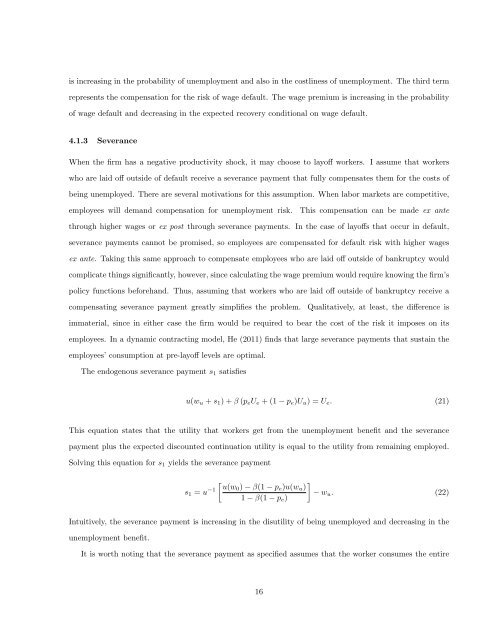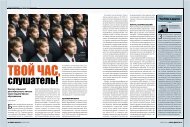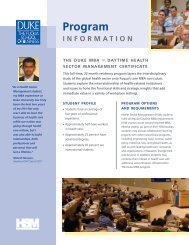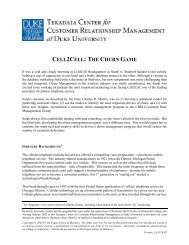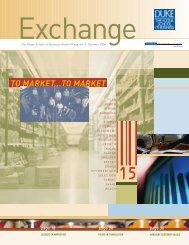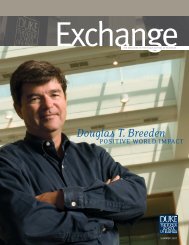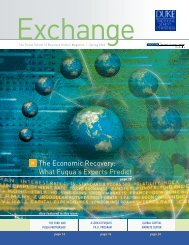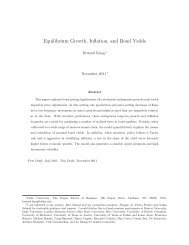A Structural Model of Human Capital and Leverage - Duke ...
A Structural Model of Human Capital and Leverage - Duke ...
A Structural Model of Human Capital and Leverage - Duke ...
You also want an ePaper? Increase the reach of your titles
YUMPU automatically turns print PDFs into web optimized ePapers that Google loves.
is increasing in the probability <strong>of</strong> unemployment <strong>and</strong> also in the costliness <strong>of</strong> unemployment. The third term<br />
represents the compensation for the risk <strong>of</strong> wage default. The wage premium is increasing in the probability<br />
<strong>of</strong> wage default <strong>and</strong> decreasing in the expected recovery conditional on wage default.<br />
4.1.3 Severance<br />
When the firm has a negative productivity shock, it may choose to lay<strong>of</strong>f workers. I assume that workers<br />
who are laid <strong>of</strong>f outside <strong>of</strong> default receive a severance payment that fully compensates them for the costs <strong>of</strong><br />
being unemployed. There are several motivations for this assumption. When labor markets are competitive,<br />
employees will dem<strong>and</strong> compensation for unemployment risk. This compensation can be made ex ante<br />
through higher wages or ex post through severance payments. In the case <strong>of</strong> lay<strong>of</strong>fs that occur in default,<br />
severance payments cannot be promised, so employees are compensated for default risk with higher wages<br />
ex ante. Taking this same approach to compensate employees who are laid <strong>of</strong>f outside <strong>of</strong> bankruptcy would<br />
complicate things significantly, however, since calculating the wage premium would require knowing the firm’s<br />
policy functions beforeh<strong>and</strong>. Thus, assuming that workers who are laid <strong>of</strong>f outside <strong>of</strong> bankruptcy receive a<br />
compensating severance payment greatly simplifies the problem. Qualitatively, at least, the difference is<br />
immaterial, since in either case the firm would be required to bear the cost <strong>of</strong> the risk it imposes on its<br />
employees. In a dynamic contracting model, He (2011) finds that large severance payments that sustain the<br />
employees’ consumption at pre-lay<strong>of</strong>f levels are optimal.<br />
The endogenous severance payment s1 satisfies<br />
u(wu + s1) + β (peUe + (1 − pe)Uu) = Ue. (21)<br />
This equation states that the utility that workers get from the unemployment benefit <strong>and</strong> the severance<br />
payment plus the expected discounted continuation utility is equal to the utility from remaining employed.<br />
Solving this equation for s1 yields the severance payment<br />
s1 = u −1<br />
� �<br />
u(w0) − β(1 − pe)u(wu)<br />
− wu. (22)<br />
1 − β(1 − pe)<br />
Intuitively, the severance payment is increasing in the disutility <strong>of</strong> being unemployed <strong>and</strong> decreasing in the<br />
unemployment benefit.<br />
It is worth noting that the severance payment as specified assumes that the worker consumes the entire<br />
16


